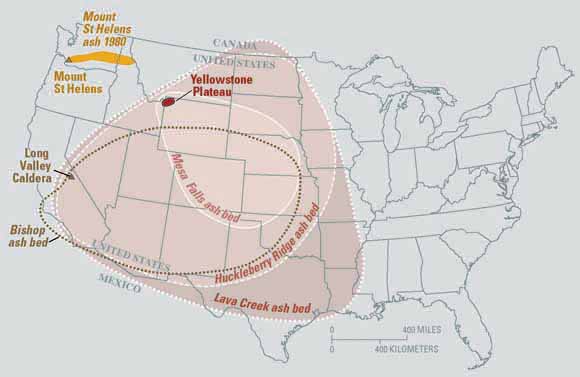Supervolcanoes Won't Destroy Earth in 2012


The notion that the world will end with the coming of the new year, as some claim the ancient Maya predicted, has spawned a series of proposed methods for this planetary disaster: galactic forces, Earth's magnetic poles flipping, the eruption of a supervolcano.
Though it has been shown that the Mayans did not in fact predict 2012 would bring the end of the world, there have been supervolcano eruptions in Earth's past that have wrought significant destruction. One such eruption may have been the cause of a major ancient mass extinction event.
But is another supervolcano eruption on the way? At the dawn of the new year, researchers say: Don't hold your breath.
Catastrophic consequences
Supervolcanoes are capable of eruptions dwarfing anything ever recorded by man, spewing out thousands of times more magma and ash. A supervolcano eruption would have consequences similar to those from the impact of a mile-wide asteroid, potentially killing millions of people and disrupting climate and ecosystems by blotting out the sun with ash and cooling the Earth.
The largest supervolcano blast of the past 25 million years may have been the most recent one: the explosion of Mount Toba in Sumatra some 74,000 years ago. Scientists say Toba released a staggering 700 cubic miles (2,800 cubic kilometers) of magma and a thick layer of ash over all of South Asia. By comparison, the famous explosion of the volcanic Indonesian island of Krakatoa in 1883 released about 3 cubic miles (12 cubic km) of magma.
There are roughly a dozen supervolcanoes today, some of them lying at the bottom of the sea. One, however, is in the middle of the United States.
Get the world’s most fascinating discoveries delivered straight to your inbox.
The most recent giant eruption of the volcanically active area underlying Yellowstone National Park created the oval-shaped, 40- by 25-mile (64- by 40-km) Yellowstone caldera. These energetic underpinnings are what fuel the park's famous geysers. [Infographic: The Geology of Yellowstone]
Minuscule odds
There is evidence that volcanic activity in Yellowstone will eventually lead to a colossal eruption capable of covering half the United States in 3 feet (1 meter) of ash. However, experts agree that super-eruptions are exceedingly rare, and the odds that one will occur in our lifetimes are vanishingly small.
In all, geologists have identified the remnants of about 50 super-eruptions. This may sound like a lot until it is put into the context of the full span of geologic history. Research suggests there is a super-eruption every 700,000 years or so, on average.
Scientists regularly monitor volcanically active regions globally, and there is absolutely no sign of a super-eruption looming anytime soon, said climate scientist Drew Shindell at the NASA Goddard Institute for Space Studies in New York, who has studied what super-eruptions might do to climate.
There has only been only one super-eruption" in more than 100,000 years, so odds are minuscule for either near-future or within our lifetime," Shindell told OurAmazingPlanet.
In any case, the ancient Maya never predicted a supervolcano eruption in 2012 to begin with.
This story was provided by OurAmazingPlanet, a sister site to LiveScience.



